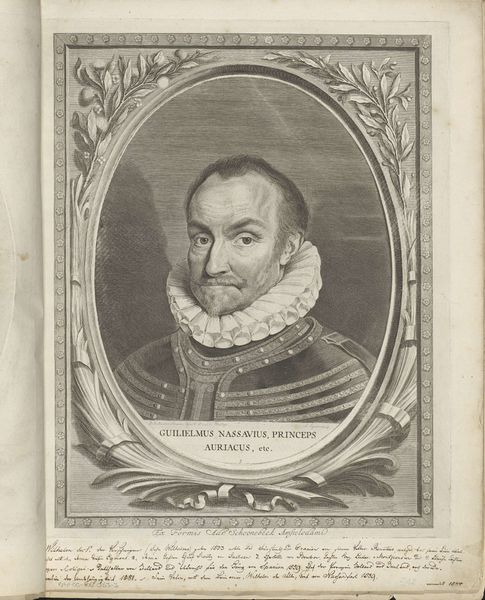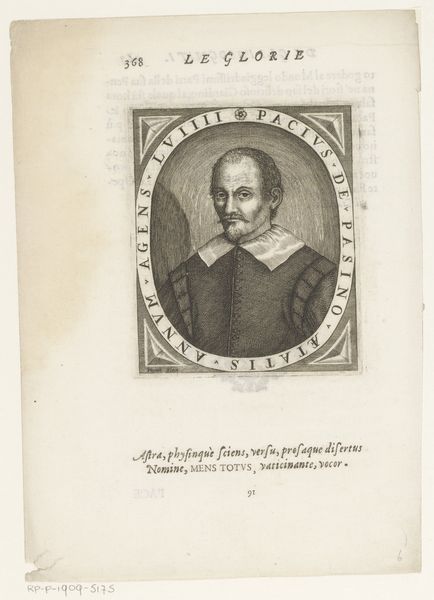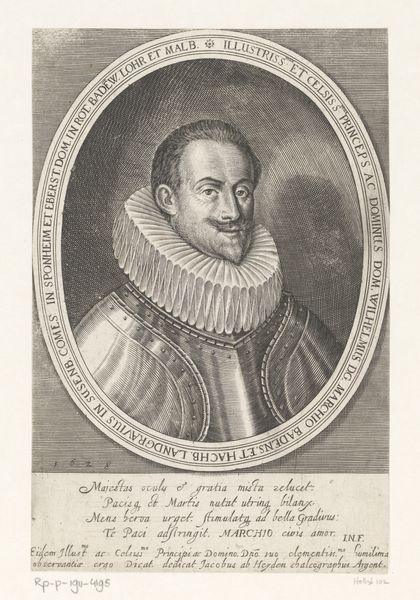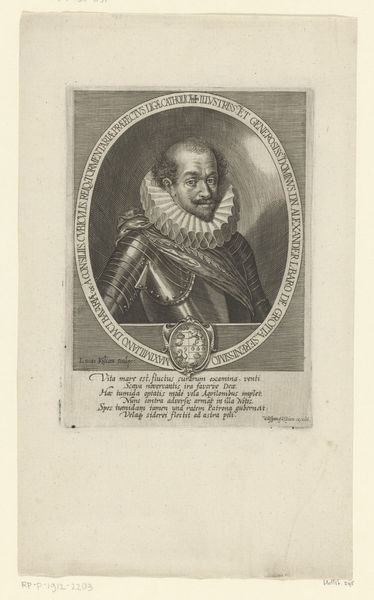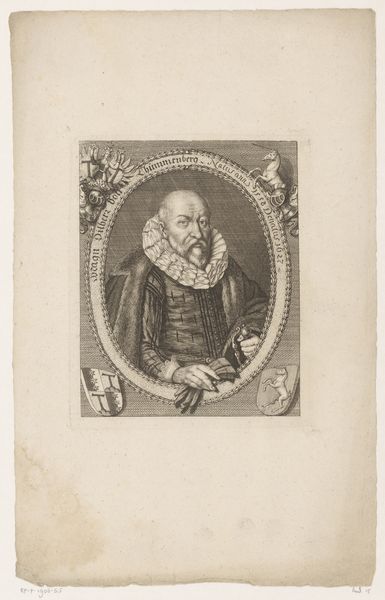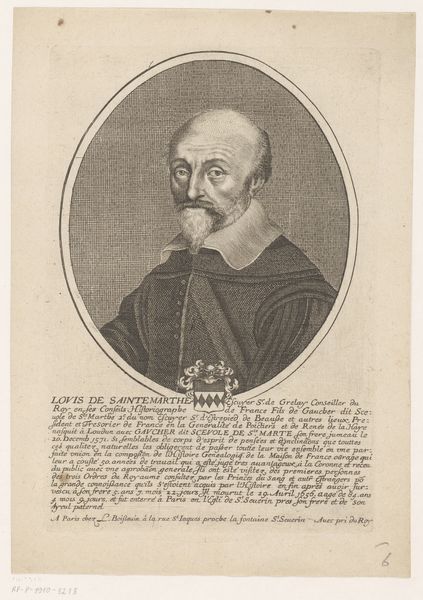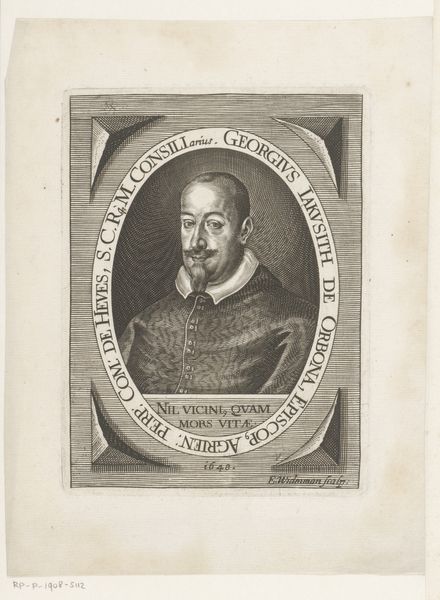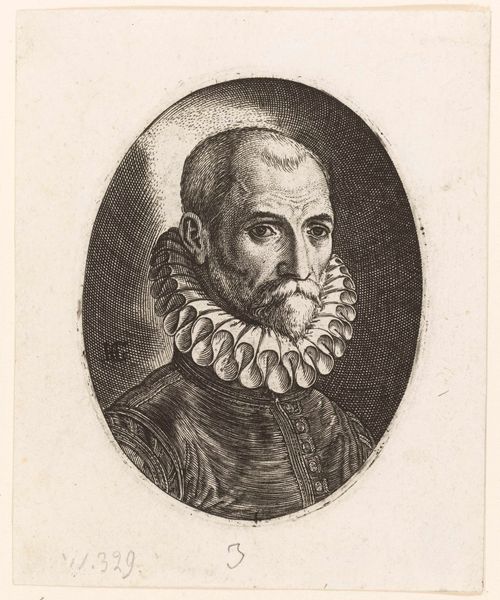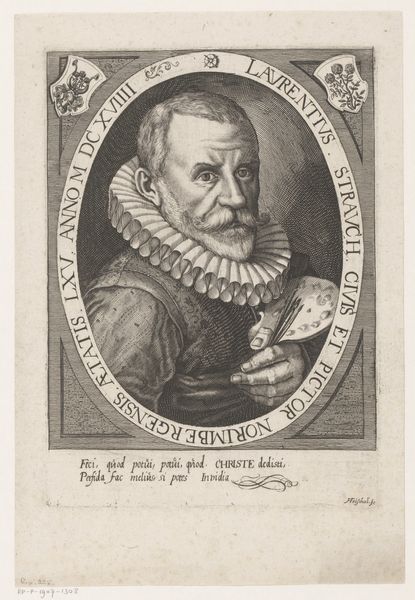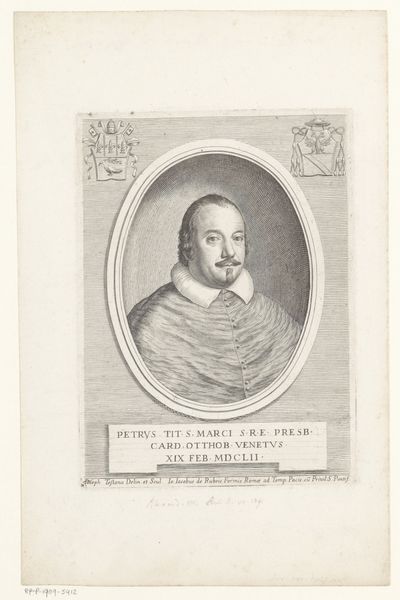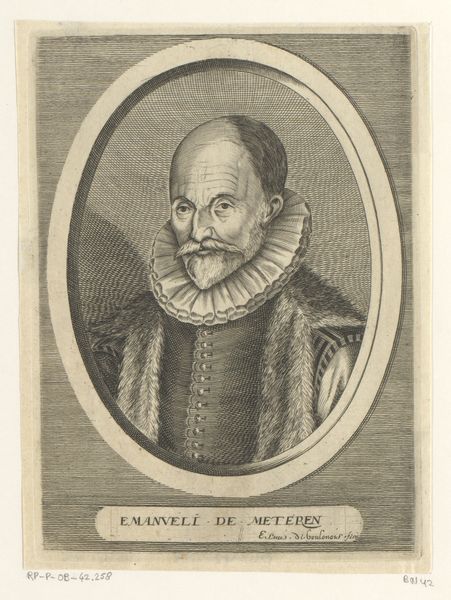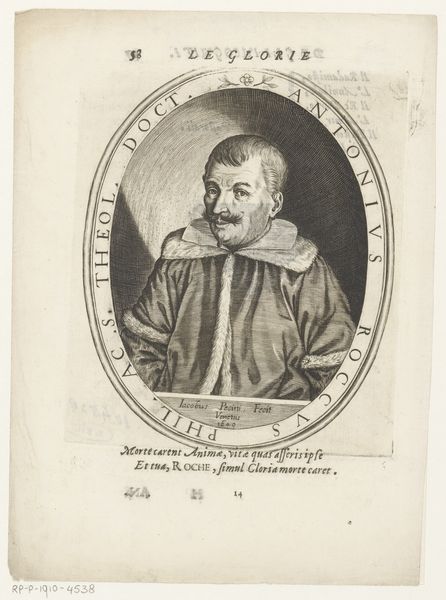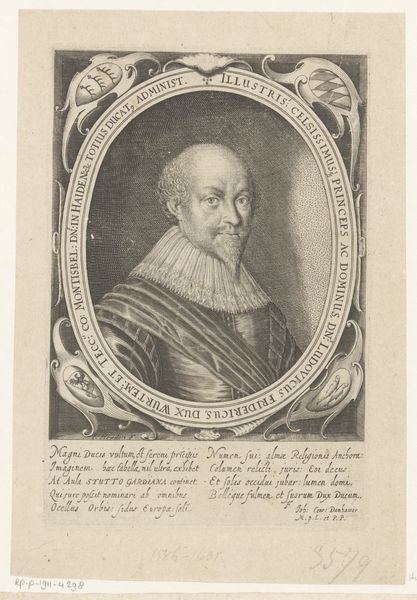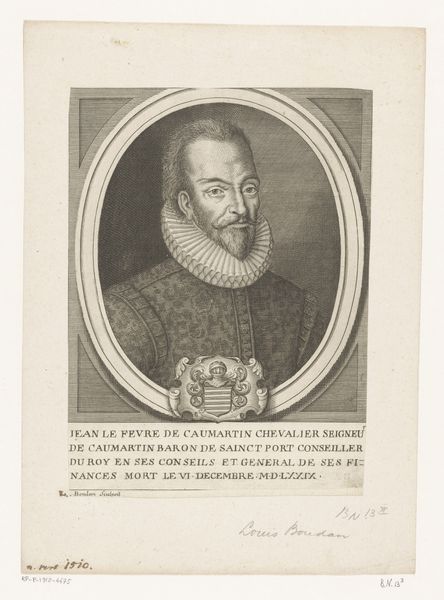
print, paper, engraving
#
portrait
#
baroque
# print
#
paper
#
engraving
Dimensions: height 152 mm, width 106 mm
Copyright: Rijks Museum: Open Domain
Curator: Here at the Rijksmuseum, we have a striking print, "Portret van Mario Nizolio," dating sometime between 1704 and 1765, created by Johann Friedrich Schmidt. What catches your eye first about this engraving? Editor: Well, formally speaking, the stark contrast immediately grabs me. The geometric background feels very deliberate, emphasizing the figure’s direct gaze. It has a wonderful intensity of expression rendered within the rigid form of the engraving. Curator: I agree. And thinking about that form, engraving allowed for mass production, making portraits like these more accessible beyond the elite. Nizolio was a philosopher, his likeness reproduced here for wider circulation and intellectual recognition. Editor: Yes, and the material quality contributes to the statement: a carefully constructed portrait replicated using the precision of printmaking. Note how the fine lines define every feature—the lace collar, his hair, and even the subtle shadows. The artist is drawing upon both artistic skill and mechanical accuracy. Curator: Exactly! Schmidt used the printmaking technique not only to depict Nizolio but also to connect him to a broader world of ideas and public discourse. The labour involved also speaks of an extensive workshop and social environment crucial for its existence and distribution. Editor: It is compelling how the choice of using an engraving influences how we engage with this man, the subject of the print. The linearity creates a sense of order that would not be achieved through other methods. It directs our focus to his face and expression. Curator: Precisely, and by analyzing these mass-produced images we gain insight into the culture and consumption of philosophical ideals within that time period, along with the machinery necessary for doing so. Editor: It’s true, this work shows how the constraints of the medium helped create its unique, focused impression. It has a certain formal elegance which serves its purpose of communicating something beyond just surface appearance.
Comments
No comments
Be the first to comment and join the conversation on the ultimate creative platform.
